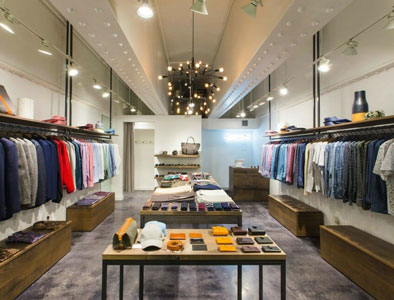Revamping Retail Spaces: The Craft of Shop Restoration

In today's fast-paced shopping environment, the aesthetic and practical appeal of your shop plays a vital role in attracting and retaining customers. As next page evolve and competition intensifies, retail refurbishment has emerged as a vital strategy for businesses looking to infuse new life into their storefronts. Whether you're a long-established brand or a new entrepreneur, grasping what retail refurbishment is and why it matters to your store is essential for staying relevant in the marketplace.
Retail refurbishment is not just about making your environment look new; it's about revitalizing your brand and improving the customer experience. A well-executed refurbishment can lead to increased foot traffic, improved sales, and a deeper connection with your customers. By investing in design and aesthetic enhancements, smart layout changes, and sustainable practices, you can create an inviting atmosphere that appeals with your customers and meets with your business objectives. This article explores the multifaceted world of retail refurbishment, providing insights on its benefits, key strategies, and the steps necessary to effectively transform your retail space.
Understanding Commercial Renovation
Commercial renovation is the procedure of updating a retail space to boost its allure, functionality, and customer experience. This change can range from slight updates, such as fresh paint and signage, to extensive renovations that change the store's design and appearance. The goal of commercial renovation is to create a retail atmosphere that resonates with consumers, adapts with present trends, and boosts the overall corporate identity.
A primary motive for initiating a commercial refurbishment is to renew a brand and increase sales. As customer tastes shift, stores must adapt to meet the demands of their target audience. Refurbishment allows retailers to refresh their offerings, add new techniques, and create attractive environments that attract and hold customers. When carried out well, a renovated store can substantially boost foot traffic and promote buying choices.
Furthermore, an efficient commercial renovation goes beyond aesthetics; it is a strategic allocation in the business's prospect. Well-planned refurbishments take into account functional improvements such as optimizing the configuration for superior flow and connection. By thoughtfully considering design elements, stores can ensure that their refurbished environment not only appears attractive but also improves the overall shopping experience for clients, ultimately showcasing the store's values and corporate identity.

The Benefits of a Retail Makeover
A store renovation is an expenditure that provides significant advantages for your business. To start, revamping your store can boost its aesthetic, attracting more shoppers and converting visitors into customers. A new look signifies to customers that your brand is cutting-edge and current, which can increase their engagement and interaction with your products. This makeover not only decorates the space but also fosters an inviting atmosphere that encourages shoppers to invest more time in your store.
In addition to attracting more customers, a store redesign can also refine the effectiveness of your space. By reassessing your store's layout and setup, you can create a more efficient flow that leads customers effortlessly through the shopping experience. This considerate arrangement makes it easier for customers to discover what they need, ultimately leading to increased sales. Beyond layout adjustments, incorporating smart design choices such as deliberate lighting and renovated fixtures can highlight key products and promotions, further improving the shopping experience.
Finally, a effective retail renovation can noticeably enhance your brand identity. By aligning your store's aesthetics with your brand values and mission, you create a consistent experience that resonates with your target audience. Customers are more likely to come back to a store that represents their tastes and values, encouraging brand loyalty. A properly done makeover not only revives the surrounding environment but also strengthens customer relationships, boosting repeat business and establishing a stronger market presence.
Organizing Your Retail Refurbishment
Effective planning is crucial for a productive retail refurbishment. Start by reviewing your current store design and identifying areas that need enhancement. Consider shopper flow, product placement, and any design aspects that may feel outdated. Collecting feedback from workers and shoppers can provide insightful insights into what modifications would improve their experience. Establish specific targets for the refurbishment; whether it's creating a more welcoming atmosphere or adding modern technology, having established objectives will direct your actions.
Subsequently, create a detailed schedule and financial plan for the refurbishment project. Investigate the costs associated with structural changes, materials, labor, and any possible disruptions during the renovation period. Focus on critical improvements versus nice-to-have features to guarantee you stay within budget without losing essential upgrades. A carefully planned timeline will help you and your team stay on track, reducing delays and unexpected costs.
Finally, consider the impact of your refurbishment on shopper experience and identity. The aesthetic choices you make should connect with your desired audience and represent your brand values. Use this opportunity to innovate and incorporate sustainable practices, which are increasingly important to consumers. Communicate your plans to employees and shoppers, building excitement and anticipation around the refurbishment. This preemptive approach will not just ease the procedure but also enhance shopper engagement during and after the project is completed.
